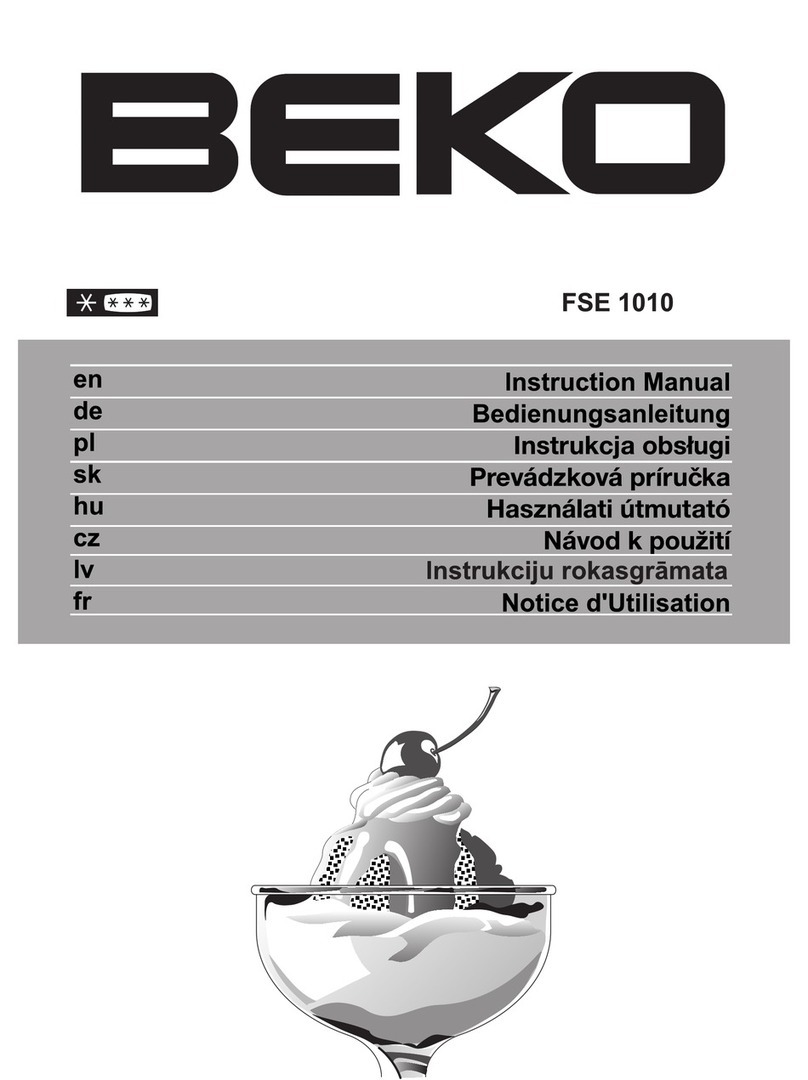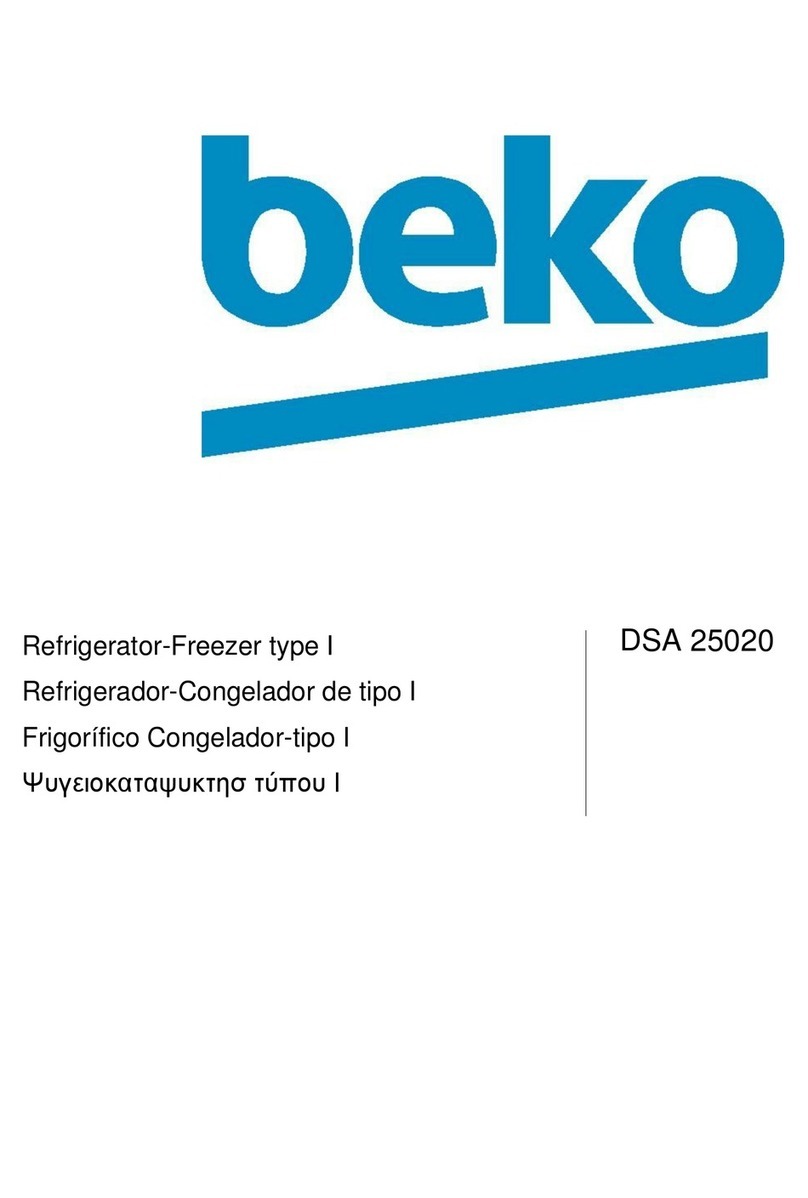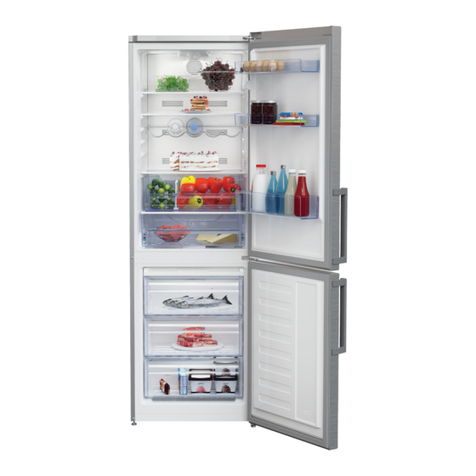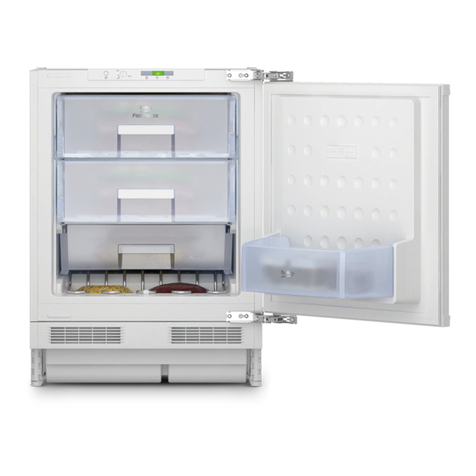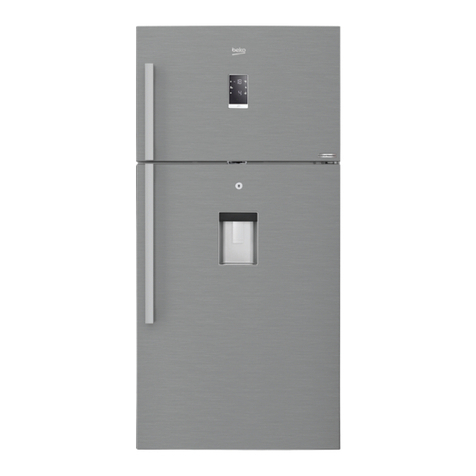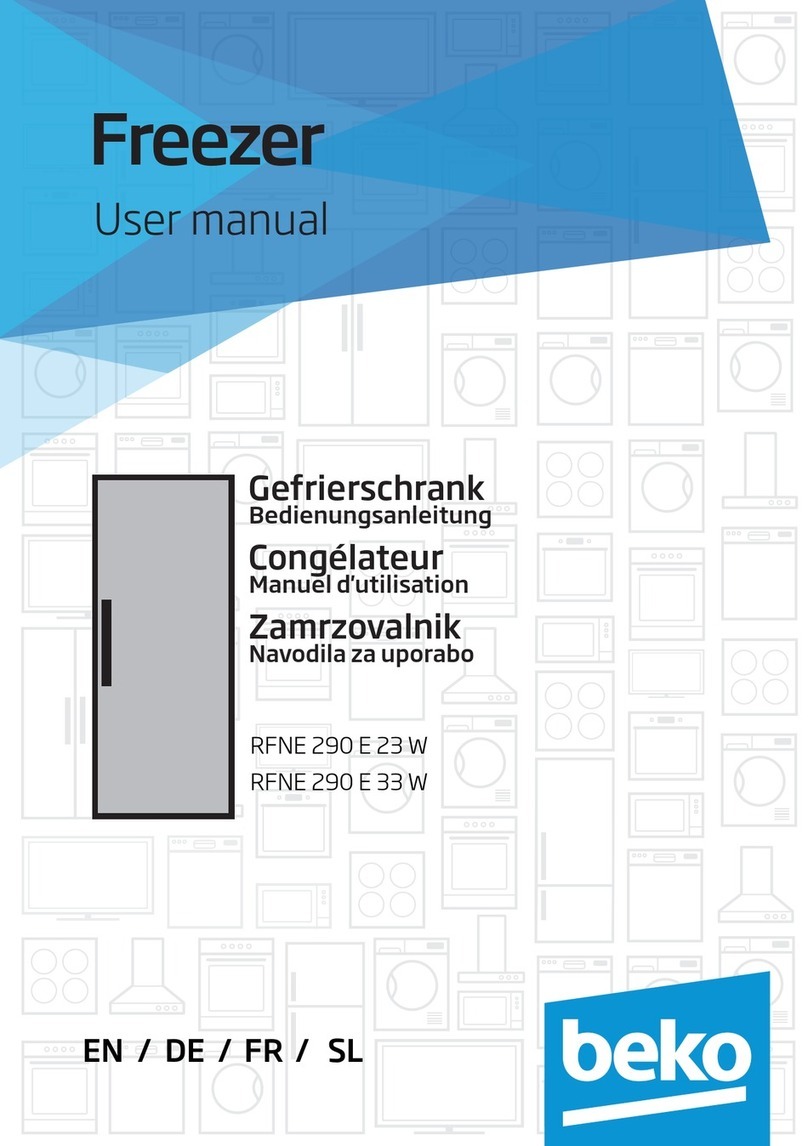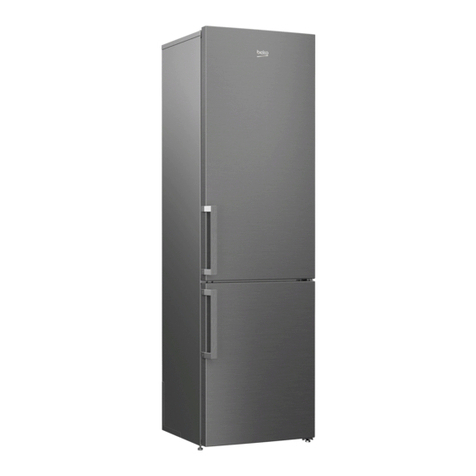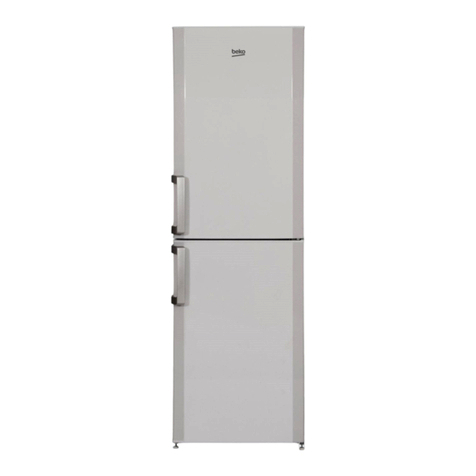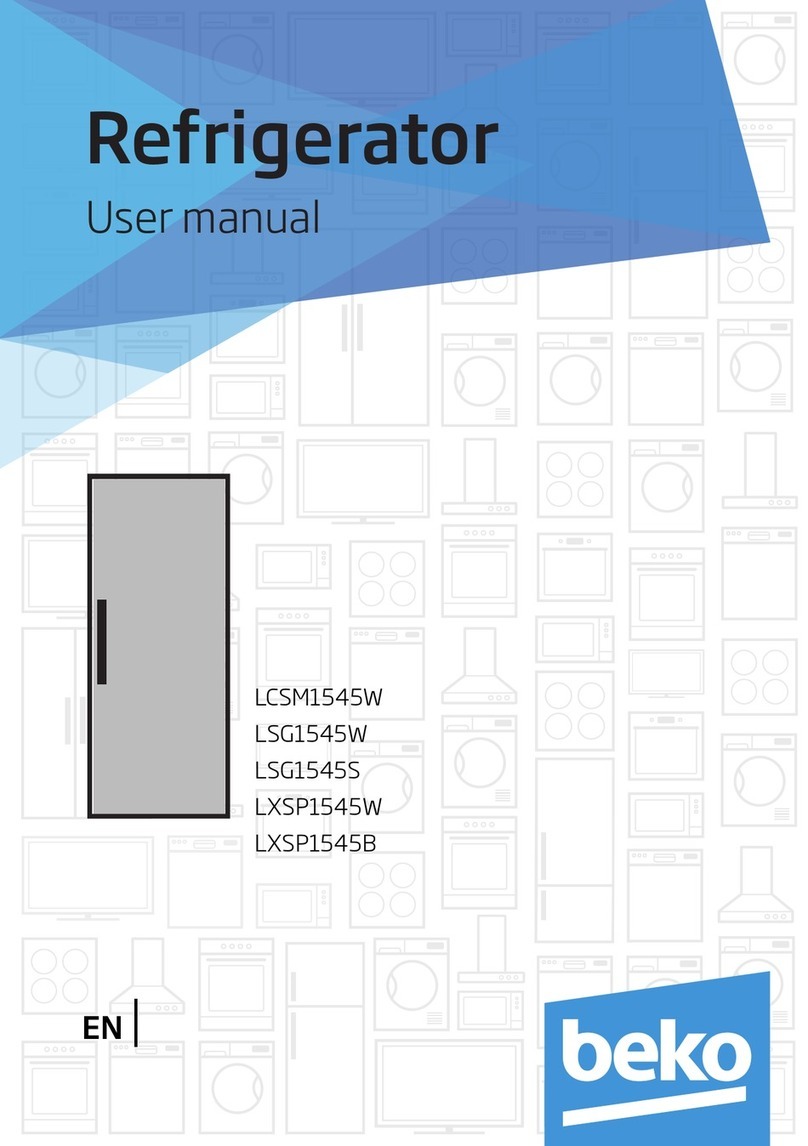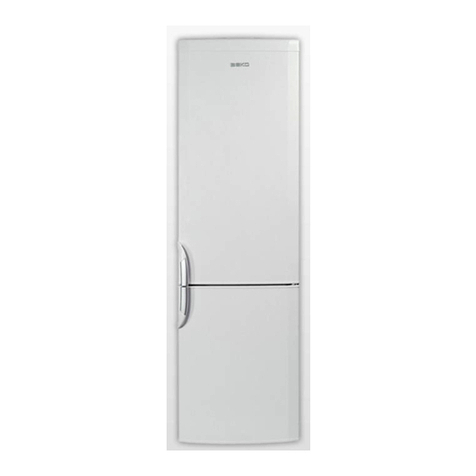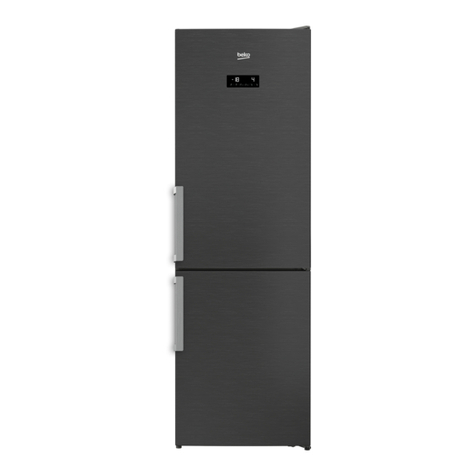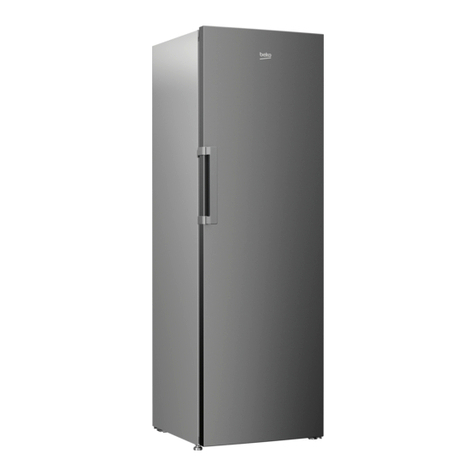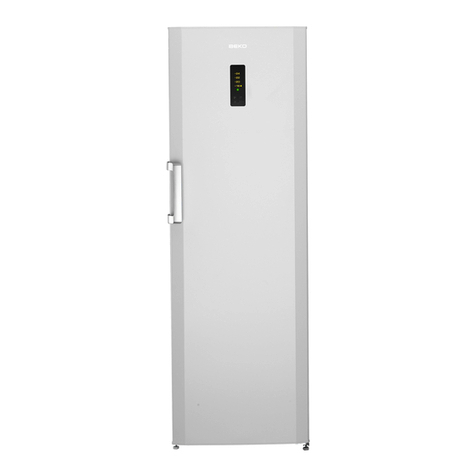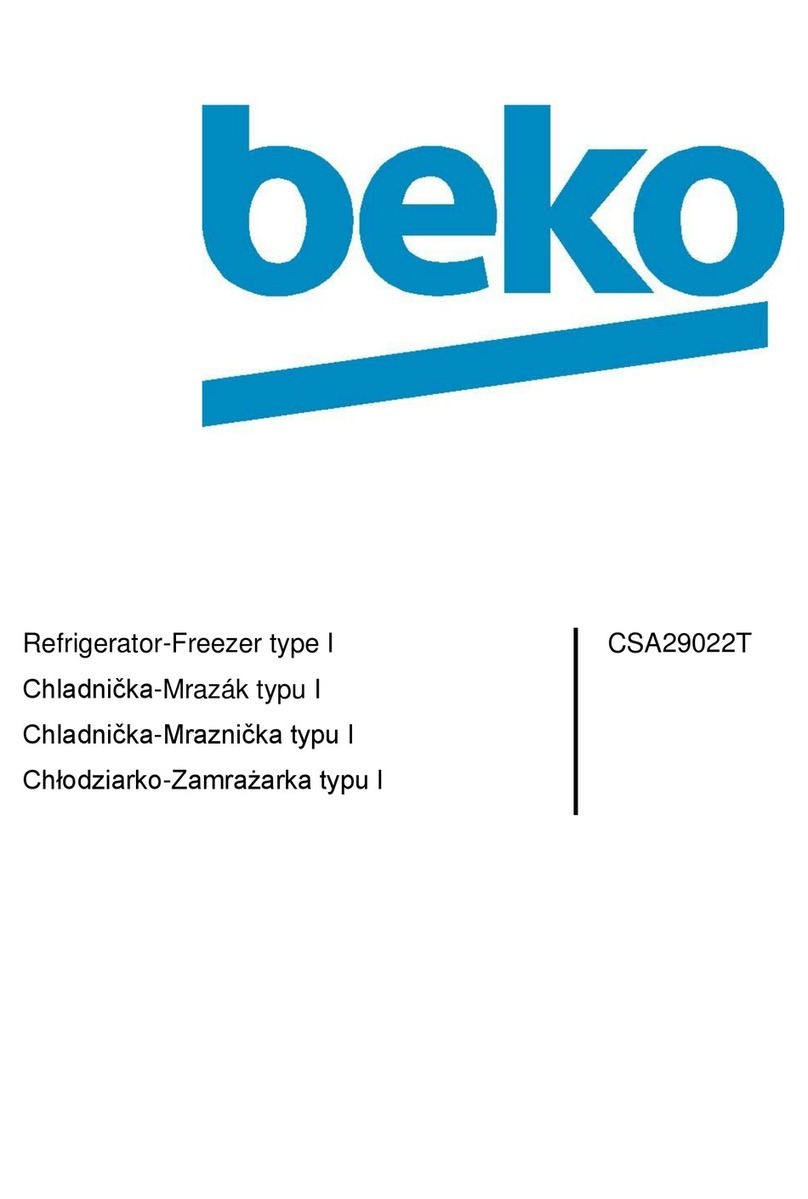
Safety first /1
Electrical requirements /2
Transportation instructions /2
Installation instructions /2
Getting to know your appliance /3
Suggested arrangement of food in the appliance /3
Temperature control and adjustment /4
Before operating /4
Storin
g frozen food /4
Freezing fresh food /4
Making ice cubes /5
Defrosting /5
Replacing the interior light bulb /6
Cleaning and care /6
Repositioning the door /6
Do’s and don’ts /7
Trouble
–shooting /8
Princípios básicos de segurança /24
Requisitos eléctricos /
25
Instruções para transporte /
25
talação /25
Detalhes do frigorífico /
26
Arrumação sugerida para os alimentos no frigorífico /26
Controlo e ajuste da temperatura /
27
27
Armazenar alimentos congelados /
27
Congelar alimentos frescos /
28
28
gelar /28
Substituição da lâmpada interior /
29
29
29
Procedimentos correctos e incorrectos /
30
31
La sécurité d’abord /
Conditions électriques /
Instructions de transport /
Instructions d’installation /
Apprendre à connaître votre appareil /
Suggestion d’agencement des denrées dans
l’appareil /
Commande de température et réglage /
Avant l’utilisation /
Conservation des denrées surgelées /
Congélation des produits frais /
Fabrication de glaçons /
Dégivrage /
Remplacer l'ampoule intérieure /
Repositionnement de la porte /
Nettoyage et entretien /
À faire / À éviter
Diagnostic /
FR Sommaire
Sicurezza iniziale /
Requisiti elettrici /
Istruzioni per il trasporto /
Istruzioni di installazione /
Conoscere l’elettrodomestico /
Suggerimenti sulla disposizione del cibo
nell'elettrodomestico /
Controllo e regolazione della temperatura /
Prima della messa in funzione
Conservazione di cibo congelato /
Congelamento di cibo fresco /
Preparazione dei cubetti di ghiaccio /
Sbrinamento /
Sostituzione della lampadina interna /
Pulizia e manutenzione /
Riposizionamento dello sportello /
Cosa fare e cosa non fare /
Risoluzione dei problemi /
IT Indice
La seguridad es lo primero /
Requisitos eléctricos /
Instrucciones de transporte /
Instrucciones de instalación /
Detalles del frigorífico /
Disposición recomendada de los
alimentos en el frigorífico /
Control y ajuste de la temperatura /
Antes del funcionamiento /
Almacenamiento de alimentos congelados /
Congelación de alimentos frescos /
Sustitución de la bombilla interior /
Cubitos de hielo /
Desescarchado /
Conservación y limpieza /
Reposicionamiento de la puerta /
Prácticas correctas e incorrectas /
Resolución de problemas /
Advertencias sobre los ruidos de funcionamiento del
aparato /
ES Índice
9HLOLJKHLGHHUVW
(OHNWULFLWHLWVYHUHLVWHQ
7UDQVSRUWLQVWUXFWLHV
,QVWDOODWLHLQVWUXFWLHV
8ZWRHVWHOOHUHQNHQQHQ
9RRUVWHOYRRUGHVFKLNNLQJYDQGHHWHQVZDUHQLQKHW
WRHVWHO
2SPHWLQJHQUHJHOLQJYDQGHWHPSHUDWXXU
$OYRUHQVGHLQZHUNVWHOOLQJ
'LHSYULHVSURGXFWHQEHZDUHQ
9HUVHHWHQVZDUHQLQYULH]HQ
,-VEORNMHVPDNHQ2QWGRRLHQ
+HWELQQHQOLFKWMHYHUYDQJHQ
6FKRRQPDDNHQRQGHUKRXG
'HGHXUYHUSODDWVHQ
:HOHQQLHW
,QIRUPDWLHRYHUGHIXQFWLHJHOXLGHQ
3UREOHPHQRSORVVHQ
1/,QKRXG
